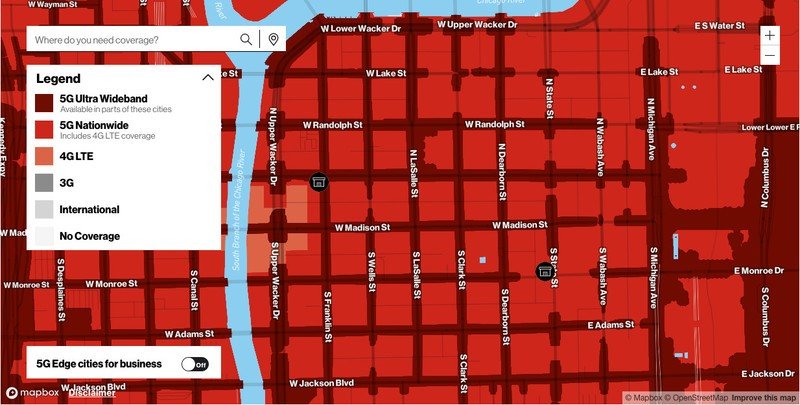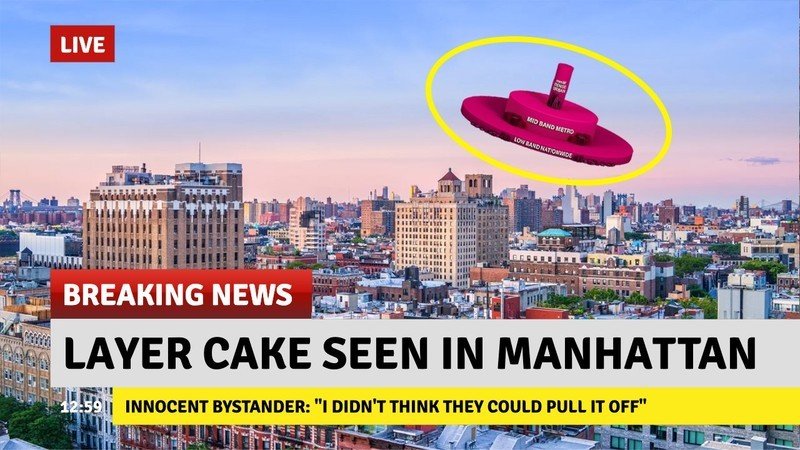In 2020, 5G tried and failed to prove its worth

2020 saw every major carrier release some sort of sub-6 5G with coverage going out to what they call "the majority of Americans," but for what? I've written quite a lot about megabits, megahertz, and layer cakes but the worst thing is, I've also found myself defending the concept of 5G in what so far seems to be the most underwhelming advance in wireless tech ever. Buying a 5G phone in 2020 feels a lot like it did when I bought a 1080p TV in 2007. If you're a nerd, you can salivate over the specifications, but if you just want to get the most out of every dollar you spend on tech, it's pretty disappointing. Still, most of the best Android phones support 5G already.
Does wireless technology really need a killer app?
The upgrade from 2G, or what most of us just called 'data,' to 3G was pretty phenomenal. Suddenly it was possible to stream music with Pandora, watch videos from YouTube, or even use a GPS with voice navigation right on your phone. Speed only really became an issue when Apple and HTC started dazzling us with smartphones that were more Microsoft Outlook and Calendar machines. In a way, the killer app for 4G and 4G LTE was the smartphone itself. And even to this day, there's not much you can do on your phone that won't work great on LTE.
Nevermind that my first Android used 4G WiMax — an ancient and frustrating technology that turned your phone into a hand warmer.
With 5G, our early impressions were pretty positive with mmWave demos from Verizon blowing our socks off with gigabit speeds that most of us still don't even get at home. There was also the promise of a range of apps and devices that will be able to take advantage of this network and make it financially viable to build. Superfast download and upload speeds were to enable cloud computing as well as enabling access to the required computational power for self-driving cars and advanced AI in the palms of our hands.

A couple of years later and mmWave 5G is still only located in the center of a handful of cities, and only as long as you're outside. Not only that, outside of a speed test or deliberately downloading large games, what is there to do with it? If you want to take your expensive phone and sit on a cold and windy sidewalk in downtown Chicago, you can get some sick speeds. These 5G canyons let you download Fortnite in record time.
Perhaps this is why every carrier working on mmWave has put it on the backburner and put all of its weight behind sub-6. The problem is, sub-6 is at best marginally faster than LTE with similar ping times and at worst, slower. And it's always less consistent. Even if your phone says 5G in the corner, there's a good chance you're on LTE, and this is true for every sub-6 carrier.
Don't get me wrong. Even sub-6 5G is still interesting technology that will eventually be faster and more useful than LTE but in 2020, using a 5G phone feels a bit like getting a PS5 and plugging it into a 720p TV. We got all of the marketing buzz for mmWave 5G with LTE performance.
Be an expert in 5 minutes
Get the latest news from Android Central, your trusted companion in the world of Android

Verizon 5G Home was an interesting idea and I truly thought it had a ton of potential for demonstrating the value of mmWave in a city but even today, it's only available in 12 cities. That's not even half of the cities Verizon has coverage for in its Ultra Wideband mmWave 5G network. Beaming 5G to you through your windows and then delivering unlimited fiber-like speeds to an area cursed with cable internet sounded like a great idea, but there has been essentially no progress all year. Verizon has all-but abandoned its 5G home internet ambitions, much like its fiber-optic network.
A long and expensive process
The problem with buying an electric car isn't just the price. You need a network of fast chargers to make it a good choice for many drivers, especially if they don't know how far they'll need to drive. It's not unfathomable that this will eventually become a norm similar to the vast number of fuel stations already dotting the country with one in basically every town, but it's going to take years of costly investment to make that happen.
5G is facing the same kind of problem.

Digging up a sidewalk, the adjacent roadway, and getting clearance from the government to build a new tower is a big job. Each step is needed for every single mmWave 5G tower that is built, and these towers need to be built at basically every intersection in an urban area. Some of these steps can be shortened by leasing roof space from a building, but that only takes care of one of these big steps. Much like adding high-speed charging networks across a large country, building a bunch of mmWave nodes is going to be very expensive, require massive infrastructure investment, and will have endless regulatory obstructions.
Sub-6 is more like a hybrid car which is designed to work on the old energy grid but ends up being a bit of a drag to use with a lot of compromises. On a level playing field with the same access to spectrum, sub-6 5G has an advantage but LTE has had years to develop and improve, and unsurprisingly, the carriers with the most traffic heavily invested their spectrum in improving LTE.
And what about the megahertz?

T-Mobile has undoubtedly emerged as the biggest name in 5G in 2020 with its 'layer cake' strategy. Its continued push for 5G coverage with speed improvements in route has kept it firmly and confidently in first place. This is years of planning finally paying off for both Sprint and T-Mobile. It offers low-band 5G with very wide coverage, mid-band 5G with less coverage but more speed, and mmWave technology on top offering blistering speeds and capacity but very little coverage. T-Mobile is working on deploying mid-band 5G as fast as it can, and it's making good progress overall, but most of us connected to T-Mobile 5G are still doing so at 600MHz.
And this reveals another problem. Not all 600Mhz spectrum was created equal, with some markets receiving a respectable 30MHz for 5G but some with as little as 10MHz. If this is a bit over your head, just remember that more spectrum will be able to deliver higher speeds, the best of low-band 5G, and the smaller amount will be much slower. This is further exacerbated when things get crowded. The amount of spectrum T-Mobile has in your areas depends on a lot of factors but mostly comes down to how much T-Mobile was able to lock down from the government.
So for those keeping track, T-Mobile has three different speed tiers of 5G with its most common tier is split up into three additional tiers across the country. Good luck knowing what 5G speeds look like where you live. Compare this with its 2.5GHz spectrum that Sprint spent years hoarding for this very moment. Most markets have well over 100MHz available for 5G alone.
5G faces the same bandwidth shortage, but LTE snapped up most of it years ago.
LTE has to contend with these very same bandwidth issues, but it has had years to grow and improve. One of the most important ways it was able to do so was by using carrier aggregation. This allows a phone to connect to not one, but multiple LTE bands at once for the best possible speed. In most areas, phones have many more LTE bands to choose from and the combined power delivers speeds on par and sometimes faster than the current 5G offering. 5G can use carrier aggregation as well, but so far, there is a lot less choice for 5G devices.
At least T-Mobile's 5G bands are fully dedicated to 5G compared to AT&T and Verizon, which will be relying heavily on DSS, or sharing LTE spectrum with 5G. AT&T does have an answer to T-Mobile's 600MHz spectrum with its own dedicated low-band spectrum at 850MHz with many of the same advantages but does not have an answer for the 2.5GHz mid-band spectrum. All three have mmWave spectrum on deck, but at this time, the largest mmWave network barely merits a mention for the average consumer.

In summary, if you used 5G in 2020, you were likely using the slowest, and least impressive version of 5G we will ever see while LTE is at the very top of its game. If your network testing rarely goes beyond a speed test app, 5G looks pretty overrated.
Should you get 5G in your next phone?
Whether you use a Pixel, a Galaxy, or even an iPhone, your next phone will probably have 5G. Most of the best Android phones you can get have 5G. But you should not buy a new phone just to get 5G. It just isn't worth it, and for most people, it probably won't be for several years. Most of what we do on our phones is very comfortable with anything over 20Mbps and that includes 1080p HD streaming and even large app downloads.
If 5G manages to find its killer app in the next few years, I don't think it will have anything to do with a phone, no matter how smart it is.
When Samuel is not writing about networking or 5G at Android Central, he spends most of his time researching computer components and obsessing over what CPU goes into the ultimate Windows 98 computer. It's the Pentium 3.

